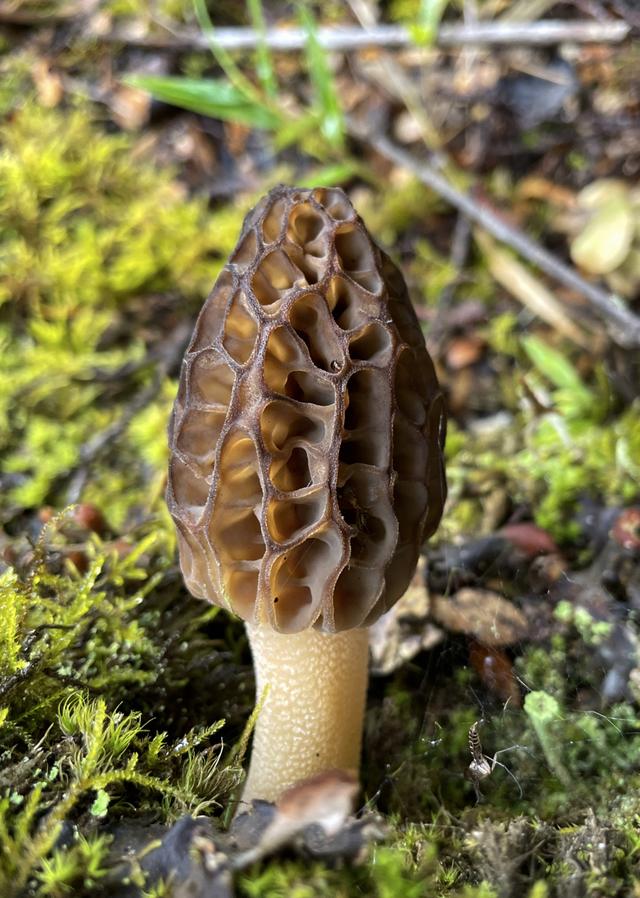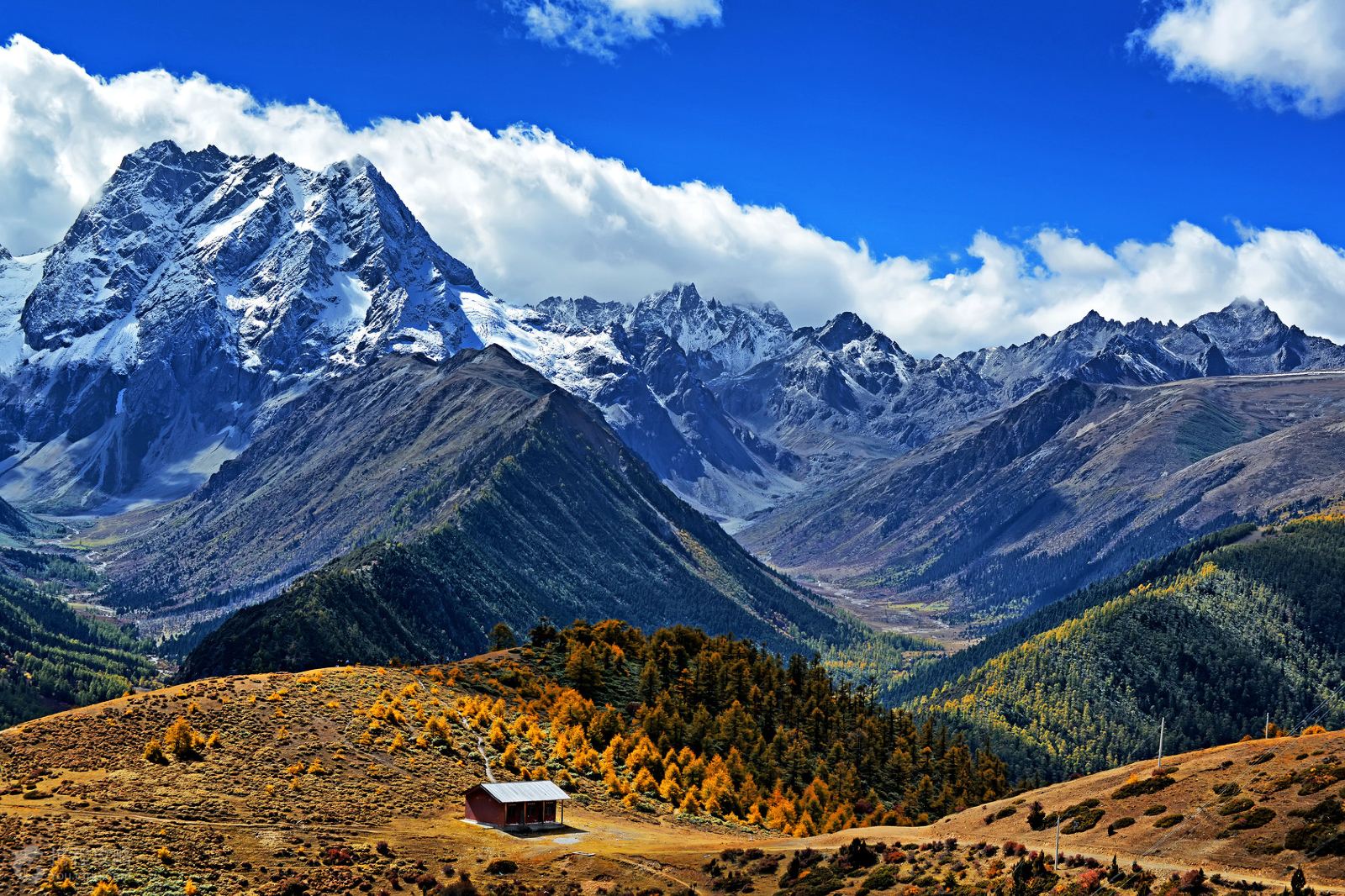Your cart is currently empty!
Morel mushrooms FQA
Morel mushroom is a fungus of the morel family, morel mushroom, the cap is nearly spherical, oval to oval, up to 10 cm high, the tip is obtuse and rounded, and there are tripe-like pits on the surface. The pits are indefinite eggshell to light yellow-brown, the ribbed color is light, the stalk is nearly cylindrical, nearly white, hollow, cylindrical, the spores are oblong, colorless, the apex of the lateral filaments is swollen, the body is light, and the quality is crispy.
Morel mushrooms are distributed all over the world, among which they are widely distributed in France, Germany, United States, India and China, followed by sporadic distribution in Russia, Sweden, Mexico, Spain, Czech Republic Slovakia and some parts of Pakistan. Morel mushrooms mostly grow on the humus layer of broad-leaved forests or mixed coniferous and broad-leaved forests. It mainly grows in sandy loam soil rich in humus or brown soil, brown soil, etc. Morel mushrooms are more likely to occur in large numbers on the forest land after fire.
Morel mushroom is a food and medicine fungus, its unique fragrance, rich in nutrition, rich in a variety of amino acids and organic germanium needed by the human body, has been used as a high-grade supplement for human nutrition in Europe and the United States and other countries.

Morphological characteristics
Morel mushroom, cap nearly spherical, ovate to oval, 4-10 cm high, 3-6 cm wide, obtuse at the apex, with a tripe-like pit on the surface. The pits are amorphous to nearly round, 4-12 mm wide, eggshell to pale yellowish-brown, ribbed and irregularly crossed. The peduncle is nearly cylindrical, nearly white, hollow, smooth above, the base is swollen and irregularly shallowly grooved, 5-7 cm long, about 2/3 the thickness of the cap. Ascomycetes are cylindrical, the spores are oblong, colorless, and each ascomyge contains 8 in a single row. The tip of the side filament is enlarged, up to 12 microns thick, light and crispy.
Growing environment
Morel mushrooms generally grow from low-altitude plain areas to 3,200 meters above sea level. It mostly grows on the humus layer of broad-leaved forests or mixed coniferous and broad-leaved forests. It mainly grows in sandy loam soil rich in humus or brown soil, brown soil, etc. Morel mushrooms grow more easily on burned forest floors.
Morel mushrooms are generally easy to germinate fruiting bodies under low temperature and high humidity conditions, so the growing season of wild morel fruiting bodies is generally in March-May or August-September every year. Studies have shown that the conditions for the occurrence of morels in the wild mainly depend on the precipitation in November of the previous year, and the occurrence of morels in the current year depends on whether the temperature of the 5 cm surface soil in the spring of that year is stable through 11.5°C. Therefore, the occurrence period of morel mushrooms is affected by the annual climatic conditions, and is closely related to the temperature, rainfall and rainfall time in the area where it occurs. In general, morels tend to occur in environments where the soil is moist or rainfall is high and easily moisturized, or the water table is high. Light has a certain effect on the formation of fruiting bodies, and the growth and development of fruiting bodies has phototaxis. Adequate oxygen and a well-ventilated place are necessary conditions to ensure the normal growth and development of morels.
nutriment
Due to the diversity of influencing factors such as atmosphere, hydrology, soil, biology and geomorphology in different regions, microclimate regions with local characteristics have been formed, resulting in obvious differences in nutrient composition and content in different production areas and different species of morels in China (Tables 1 and 2): the protein content of morel mushroom in Yunnan was the highest, the lipid content of morel mushroom in Hubei was the highest, and the carbohydrate content of morel mushroom in different regions was similar. Morel coarse-stemmed had the highest protein content, morel had the lowest protein content, and morel had a lower protein content but higher lipid and mineral content.
1.
Amino acids and protein: The protein content in morels can reach more than 20%. Morel protein has a variety of effects such as dextran lyase activity, lipoxygenase activity, and inhibition of platelet aggregation. Selenization modification could improve the antioxidant activity of morel protein in vitro. Some peptides and amino acids formed by the digestion and decomposition of morel protein have the functions of lowering blood pressure and antibacterial. Shi Gangrong called the analysis of 19 kinds of amino acids in morels, of which 8 essential amino acids such as isoleucine and lysine were abundant, accounting for 47.47% of the total amino acids. The researchers also found that morels contain rare amino acids such as 2,4-diaminoisobutyric acid and α-amino-isobutyric acid, which determine their unique flavor induction, so morels have a good freshness effect and can be used to develop umami agents. HaVana isolated a new amino acid from morels, and nuclear magnetic resonance spectroscopy, deamination and elemental analysis showed that its structure was cis-3-amino-L-proline.
2.
Lipids: Morel mushrooms are rich in fatty acids.
3.
Vitamins: Morel mushrooms are not only rich in vitamins, but also have many types. The study found that morel mushrooms contain VB, VE, niacin, folic acid, pantothenic acid, biotin, 3 carotenoids (β-carotene, δ-carotene and ζ-carotene) and 4 lutein (zeaxanthin, astaxanthin, limethin and lutein). Morel mushrooms contain 3 carotenes (δ-carotene, ζ-carotene and γ-carotene) and 5 lutein (caraxanthin, astaxanthin, zeaxanthin, streptoerycin, and red plate mycoflavin).
4.
Minerals: Liu Minli et al. detected at least 20 kinds of mineral elements in morels by plasma direct reading spectroscopy, including macro elements such as Ca, Mg, P and trace elements such as Zn, Mn, Cu, Co, Cr, Fe, Ni, B, Sr and V. The content of Fe in morel mushroom is high, which has a good effect on the prevention and treatment of iron deficiency anemia and the supplementation of blood iron in pregnant women. The contents of Cd, Pb, Zn and Mg in morels meet the standards of the Food and Agriculture Organization of the United Nations/World Health Organization. Among these mineral elements, Zn has the highest content, which is an essential trace element for the human body, which can promote human growth and development and enhance human immune function. The ratio of Zn to Cd content in morels (459.01) was large, and studies have proved that foods with high Zn to Cd content ratio can prevent hypertension. The content of Mg, Zn, Mn, Ca, Cr, Cu and Co in morels is high, and these seven mineral elements have pharmacological activities against cardiovascular diseases and cancer. In addition, the Ser content of morel mushrooms harvested from Yunnan was as high as 5.16 mg/kg. Se is an essential trace element in the human body, which maintains the normal metabolism of free radicals through glutathione peroxidase, coenzyme Q and VE to maintain the normal physiological functions of the human body; The Se in morels exists in an organic form that is conducive to human absorption, which can strengthen the antioxidant effect of VE, change the metabolic direction of carcinogens, and reduce or eliminate the risk of carcinogenesis.
5.
Carbohydrates: Morel mushrooms are rich in carbohydrates.
nutritive value
Morel mushroom contains polysaccharides that inhibit tumors, antibacterial and antiviral active ingredients, and have the effects of enhancing immunity, anti-fatigue, anti-virus, and tumor inhibition. Morel mushrooms are rich in selenium, which is a component of human red blood cell glutathione peroxidase, which can transport a large number of oxygen molecules to inhibit malignant tumors and inactivate cancer cells; It can enhance the antioxidant effect of vitamin E.
Morel mushroom has a high content of organic germanium, which has the effect of strengthening the body, preventing colds and enhancing human immunity. It contains a large number of essential mineral elements, and the content of potassium and phosphorus per 100 grams of dry samples is 7 times and 4 times that of Cordyceps sinensis, and the content of zinc is 4.3 times that of Shiitake mushroom and 4 times that of Hericium erinaceus. The iron content is 31 times that of shiitake mushrooms and 12 times that of monkey heads.
Buying tips
Look at the appearance: morels are preferably large and thick. We want to choose a large, domed, thick-fleshed, intact shape without damage, and a thick and thick stalk. The pointed and thin stalks are generally planted morels, and the nutritional value is significantly reduced. The bigger the umbrella is as large as possible without breakage.
Look at the color: Good quality dried morels are generally brown or brown in color. Don’t buy those that are too dark, you may be planting morels or dyeing morels.
Smell: Dried morels have a strong aroma and no musty, sour or other peculiar smells.
Soaking with water: Dried morels need to be soaked in water before they can be eaten, and the soaked water is burgundy in color, which is the essence of morels. Those that cannot become soft or too soft after soaking are poor quality dried morels, and those that do not change color in water are also poor quality dried morels.

Leave a Reply